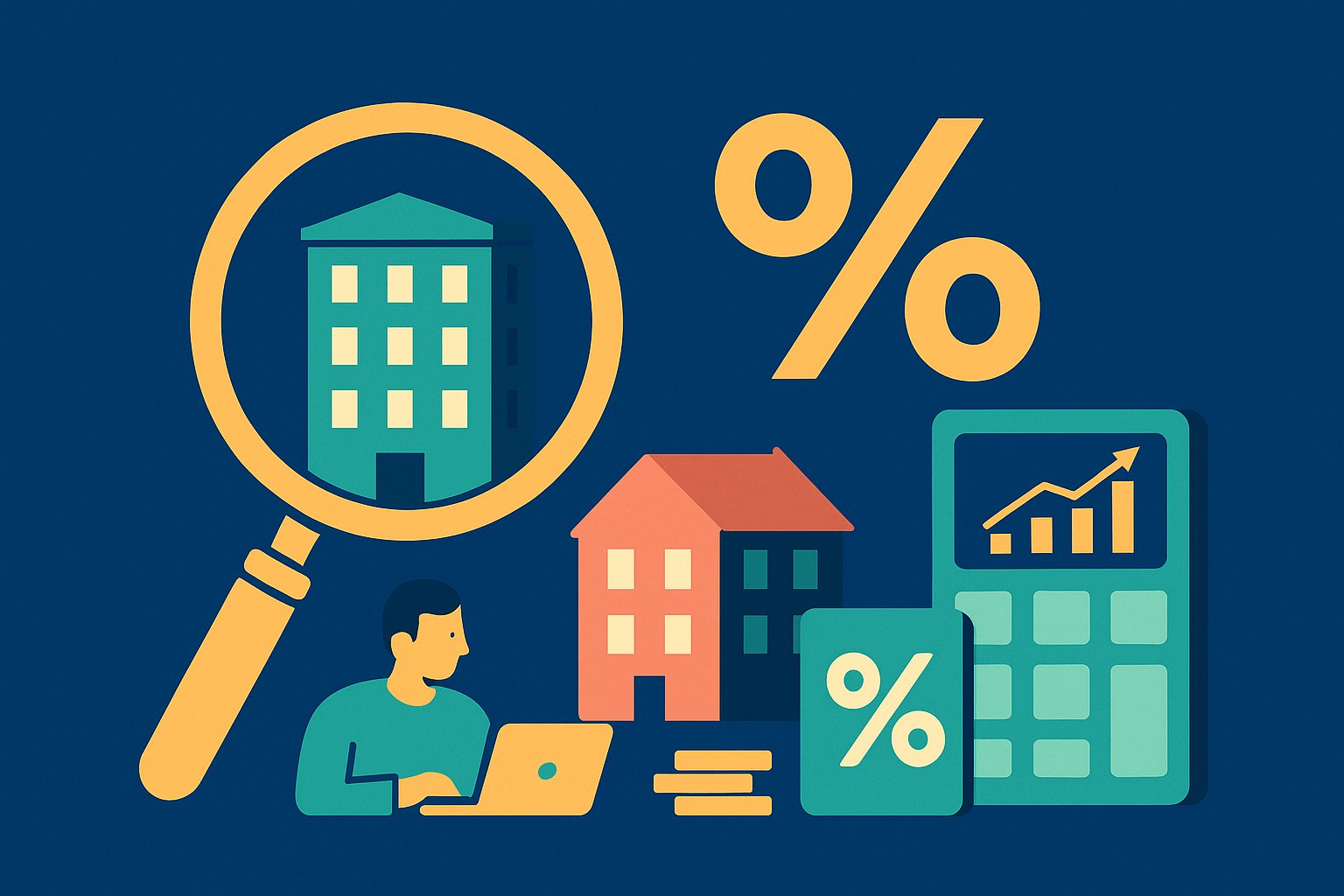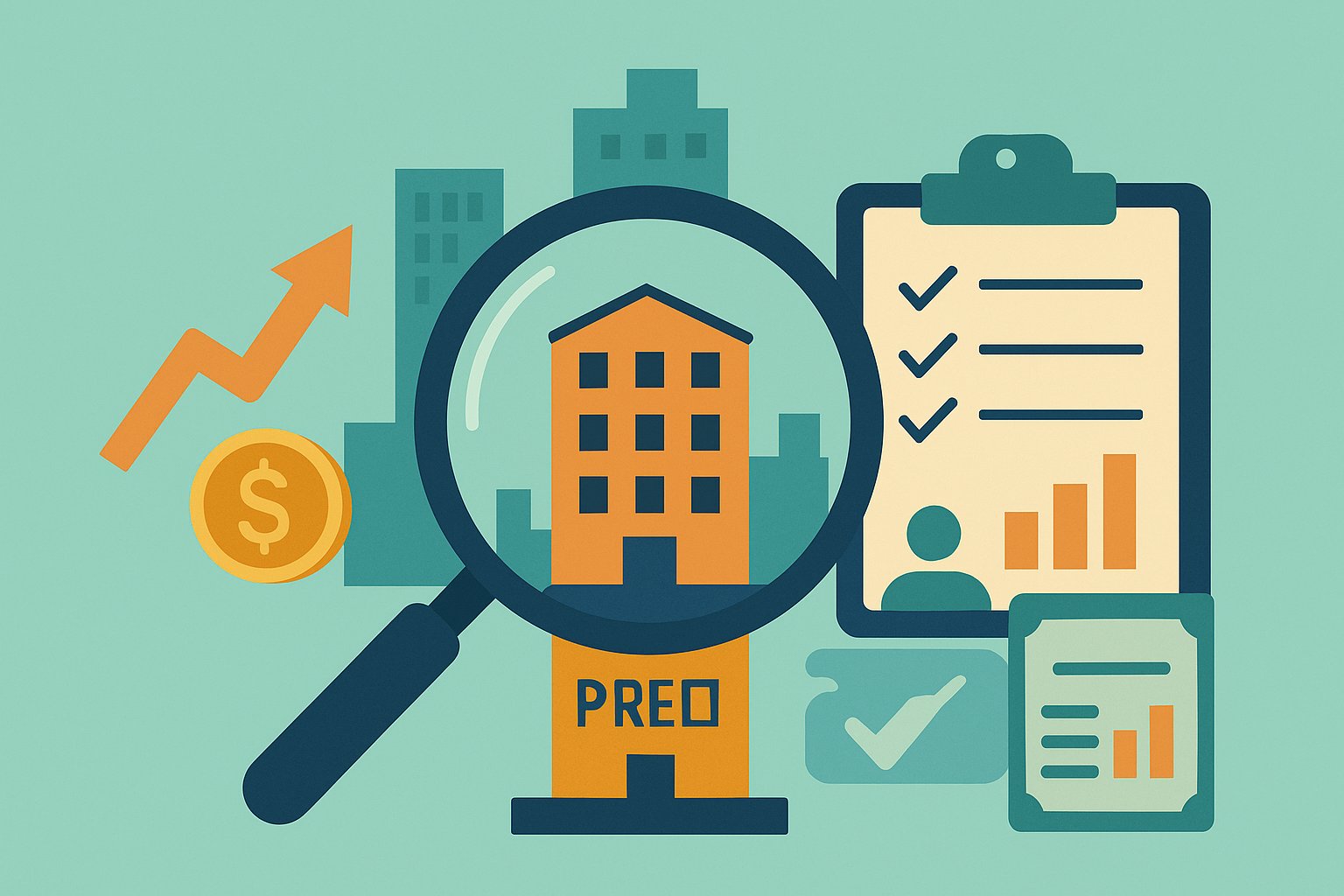Decoding Cap Rates: The Heartbeat of Multifamily Valuation
In the landscape of multifamily crowdfunding deals, the capitalization rate—commonly known as the cap rate—serves as the fundamental metric that distills complex cash flow forecasts and property valuations into a single, digestible figure. At its core, the cap rate represents the ratio of a property’s net operating income (NOI) to its current market value. This percentage offers investors an at-a-glance gauge of the expected income yield, helping to compare disparate deals on an “apples to apples” basis. For first-time and seasoned crowdfunding participants alike, mastering cap rate analysis is akin to learning the pulse of a property’s performance and risk profile, guiding prudent capital allocation in an increasingly crowded marketplace.
Calculating Cap Rates: Unpacking the Formula
Understanding how to precisely calculate a cap rate is the first step toward insightful deal analysis. You begin by estimating the property’s net operating income: total annual rental and ancillary revenue, minus operating expenses such as property management fees, insurance, maintenance, and reserves. Dividing this NOI figure by the property’s acquisition price—or its current valuation—yields the cap rate. In a crowdfunding context, platforms often provide the projected NOI and purchase price within the deal memorandum. However, savvy investors should verify these inputs against third-party appraisals and market rent comparables to ensure that the cap rate reflects realistic assumptions rather than optimistic forecasts.
Why Cap Rates Matter in Crowdfunding Contexts
In the crowdfunding arena, where deals can span multiple markets, property classes, and sponsor strategies, cap rates act as a common denominator that cuts through structural differences. A 6.5% cap rate on a stable, Class A apartment complex in a Tier-1 city might signal less risk but lower upside, whereas a 9% cap rate on a value-add property in a secondary market offers higher potential income—but with greater execution and market risk. By focusing on cap rates, investors can quickly gauge whether the projected yield compensates adequately for the property’s underlying risk factors, from local demand dynamics to property condition and sponsor expertise.
Interpreting Market Signals: Cap Rates and Geographic Nuances
Cap rates are far from uniform across the country; they ebb and flow according to regional supply-and-demand dynamics, economic growth prospects, and investor sentiment. Major metropolitan areas with robust job growth and housing scarcity often trade at lower cap rates—reflecting premium pricing and intensified competition—while tertiary markets with developmental catalysts may command higher cap rates to attract capital. Within crowdfunding platforms, deal listings usually highlight regional cap rate averages, empowering investors to contextualize a specific property’s yield against its broader submarket. Recognizing these geographic nuances ensures you neither overpay in hot markets nor overlook hidden gems in emerging corridors.
Balancing Risk and Return: Cap Rates as a Compass
While cap rates offer clarity on expected income yields, they also serve as a compass for balancing risk and return. Lower cap rates generally correlate with stabilized assets and strong tenant demand, implying reduced vacancy risk and more predictable cash flows. Conversely, high cap rates can indicate distressed situations, value-add opportunities, or markets with less competition—each carrying its own set of uncertainties. Multifamily crowdfunding investors should calibrate their exposure across a cap rate spectrum: anchoring a core allocation in deals with conservative yields for stability, while selectively targeting higher-cap projects that promise amplified returns, provided the sponsor’s renovation and leasing plans are sound.
Comparing Multifamily Crowdfunding Opportunities
When evaluating multiple crowdfunding deals, cap rates become a critical sorting mechanism. By lining up cap rate projections side by side, you can quickly eliminate outliers whose yields seem too low to justify market risk or suspiciously high to trust the underwriting. This preliminary filter should be followed by deeper dives into the deal structure, sponsor track record, and capital stack. A property with a slightly lower cap rate may still outperform a higher-yielding asset if it features superior debt terms, stronger market fundamentals, or a sponsor with proven value-add execution. In this way, cap rates set the stage for nuanced comparisons rather than serving as the sole determinant.
Beyond Cap Rate: Complementary Metrics to Watch
Although cap rates are indispensable, relying on them in isolation can obscure key dimensions of risk and reward. Investors should also examine the internal rate of return (IRR), equity multiple, and cash-on-cash return to capture the full spectrum of projected distributions and appreciation. Additionally, metrics such as debt service coverage ratio (DSCR) and loan-to-value (LTV) ratios reveal how comfortably a property can absorb financing costs and valuation shifts. By weaving cap rate analysis into this broader tapestry of performance indicators, you develop a holistic view of each crowdfunding opportunity—one that balances immediate yield with long-term capital growth potential.
Sifting Through Sponsor Projections and Actuals
Cap rate projections in deal materials stem from sponsor forecasts, which can vary in conservatism and accuracy. To ensure integrity, cross-reference projected NOIs and cap rates with historical performance on similar assets sponsored by the same team. Many platforms display past deal outcomes, including realized cap rates upon exit and lessons learned from underwriting variances. When sponsor projections consistently underdeliver relative to initial cap rate estimates, exercise healthy skepticism and adjust your yield expectations accordingly. Conversely, sponsors with strong track records of hitting or exceeding projected cap rates in multifamily crowdfunding deals earn greater credibility—and may warrant a larger investment allocation.
Impact of Financing and Leverage on Cap Rate Analysis
Cap rates, by definition, focus on unlevered yield—NOI divided by asset value—so they do not reflect the amplified returns or risks introduced by debt financing. In multifamily crowdfunding, many deals employ mortgages or mezzanine loans to boost equity returns. A property with a 7% cap rate financed at a 70% LTV may deliver a much higher cash-on-cash return—provided the interest rate on the debt remains stable. However, rising rates or tighter lending environments can erode these gains and pressure cash flows. When analyzing cap rates, always consider accompanying financing terms: interest rates, amortization schedules, and debt covenants that could transform a promising cap rate into a more precarious venture.
Stress-Testing Cap Rates for Downside Scenarios
No market moves uninterruptedly upward, and multifamily assets can face headwinds such as economic slowdowns, regulatory changes, or local demand shocks. Stress-testing cap rates involves modeling how NOI and asset values might shift under adverse conditions: slower rent growth, higher vacancy rates, or increased operating expenses. By applying conservative cap rates—perhaps 100 to 200 basis points above current projections—you simulate the buffer needed to maintain cash distributions and debt coverage. This exercise reveals whether a deal retains viability when markets cool, helping you filter out crowdfunding opportunities that depend on uninterrupted market strength to meet their cap rate targets.
Real-World Case Studies: Cap Rate Insights in Action
Consider a suburban value-add apartment complex listed at an 8.5% projected cap rate. Sponsors plan cosmetic upgrades, rent increases, and operational efficiencies to boost NOI over 18 months. A nearby stabilized property trades at a 6.5% cap rate, indicating that the market rewards low-risk assets more cheaply. By comparing these benchmarks, investors gauge both the upside potential of the value-add play and its relative risk premium. If the renovation yield uplift aligns with the cap rate gap—say, a 2% improvement in NOI—the deal may justify its higher starting cap rate. Such case studies illuminate how cap rate analysis intersects with value-add strategies in multifamily crowdfunding.
Crafting a Robust Cap Rate Strategy for Your Portfolio
Developing a personalized cap rate strategy involves setting target yield bands that reflect your risk tolerance and return objectives. Conservative investors might anchor at cap rates of 5.5% to 6.5% in top-tier markets, with a smaller satellite allocation at 7.5% to 8.5% for value-add plays. More aggressive participants might expand their range to include deals at 9% or above, provided the sponsor’s business plan demonstrates credible NOI growth. Periodic portfolio reviews—rebalancing allocations when cap rate spreads compress or widen—ensure that your overall yield profile remains aligned with market conditions and your evolving financial goals.
Avoiding Common Pitfalls in Cap Rate Evaluation
Cap rates, while powerful, come with traps for the unwary. Overlooking hidden expenses—such as capital reserves for deferred maintenance or sponsor fees—can inflate projected NOI and understate true yields. Ignoring differences in calculation methods between sponsors may lead to inconsistent comparisons across deals. Additionally, placing undue weight on current cap rates without assessing long-term value drivers, like demographic trends or zoning changes, risks missing strategic growth opportunities. By maintaining rigor in your cap rate calculations, verifying inputs, and contextualizing yields within broader market and sponsor analyses, you sidestep these common missteps.
The Future of Cap Rates: Trends and Technology in Crowdfunding
As real estate crowdfunding platforms evolve, innovative tools are emerging to enhance cap rate analysis. Machine learning algorithms can parse vast data sets—rent rolls, market indicators, and historical sales—to generate real-time cap rate benchmarks by submarket. Tokenized property shares promise instant liquidity and continuous price discovery, enabling dynamic cap rate adjustments based on trading activity. Furthermore, data-visualization dashboards will allow investors to overlay cap rate trends with macroeconomic signals, offering early warnings of compression or expansion cycles. Embracing these technological advances empowers multifamily crowdfunding investors to refine their cap rate strategies with unprecedented speed and precision.
Elevating Your Multifamily Crowdfunding Acumen
Analyzing cap rates in multifamily crowdfunding deals is both an art and a science—requiring meticulous calculation, contextual market insight, and strategic portfolio alignment. By mastering the cap rate formula, interpreting regional nuances, stress-testing assumptions, and complementing yields with financing and IRR considerations, you gain a comprehensive toolkit to evaluate opportunities with confidence. As crowdfunding platforms increasingly democratize access to institutional-grade multifamily assets, your ability to decode cap rates will distinguish you as a discerning investor, equipped to identify deals that balance income stability with growth potential. Harness this knowledge, and watch your real estate portfolio thrive in the dynamic world of multifamily crowdfunding.




